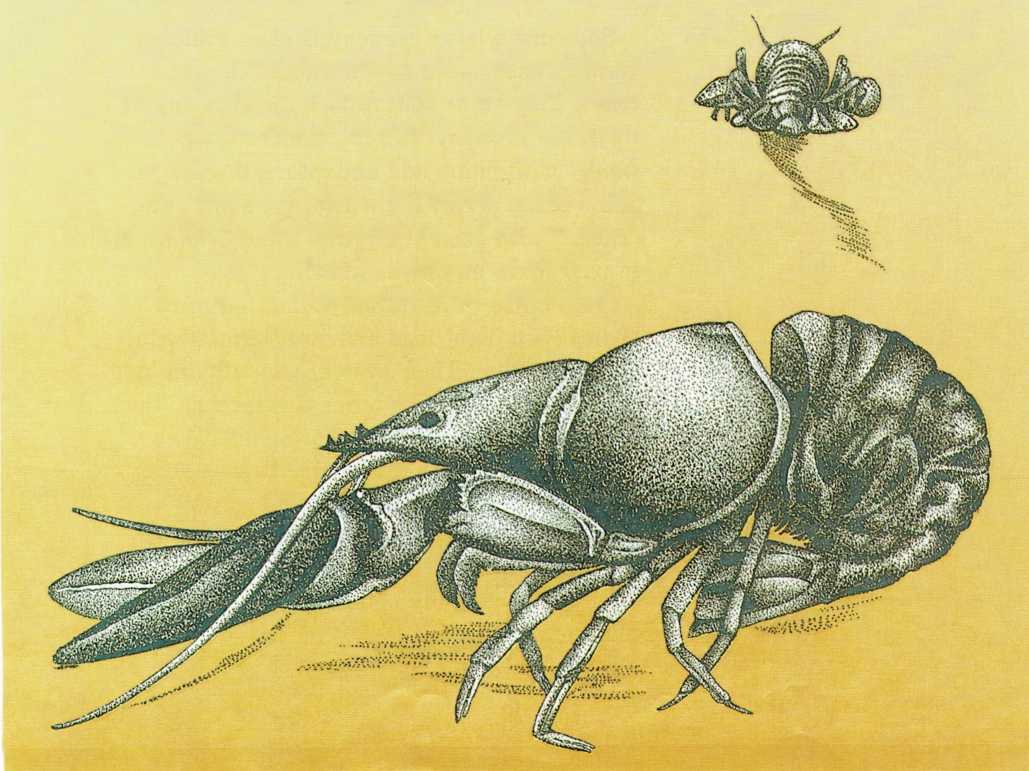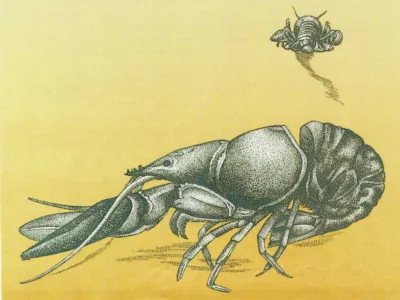The gawky lobster
Many people think that lobsters are bright red. That’s because they’ve
only seen cooked lobsters. Cooking turns them red. But live lobsters
are greenish, or bluish, or brownish.
A lobster is a rather complicated-looking animal. It has all sorts of
legs and \”arms” and feelers and flaps that stick out from its body.
This is because a lobster’s body is divided into many sections, and on
almost every section there’s a pair of something.
The first section has a pair of eyes, on short stems. On the second
section there is a pair of short antennae, with two branches. On the
third section are two long antennae.
The next six sections have differently shaped, little leglike things.
These are used for crushing and chewing food and moving it up to the
lobster’s mouth. A lobster doesn’t chew with its mouth—the mouth is
just an opening.
On the next section there are two big legs that are used much like arms.
Each ends in a big claw. One claw is quite heavy and has strong teeth
for crushing prey. The other claw, which is smaller, has sharp teeth for
tearing food apart. Not all lobsters have the heavy claw on the same
side. Some lobsters are \”right- handed” and some are \”left-handed.”
On the next four sections are the lobster’s legs—eight of them—-that
it uses for walking. Most of the rest of the sections have pairs of
paddles that the lobster uses for swimming.
Most lobsters live along rocky coasts. Each lobster has its own \”home,”
which is a hole in the rocks where it stays hidden during the day. At
night, it comes out and walks along the ocean bottom in search of food.
Lobsters eat snails, clams, small fish and dead animals they chance to
find. Some lobsters also eat small amounts of seaweed.

After it feeds, a lobster always returns to its hole. It is in constant
danger when away from home. Even though a lobster’s armorlike skin
protects it from many creatures, this \”armor” is no protection at all
against some. An octopus, for example, can easily break open a lobster’s
shell and happily feast on the soft flesh beneath.
Like all crustaceans, a lobster has to crawl out of its shell from time
to time in order to grow. The tough shell splits across the back, at
about the middle of the lobster’s body. The lobster then slowly backs
out of this opening, leaving a complete but empty \”suit of armor”
behind.
The new shell, which has already formed under the old one, is soft. It
gives the lobster no protection. Even the claws are too soft to be of
use.
For about six weeks the lobster stays in its hole. During this time the
new shell slowly hardens. Not until it has a new \”suit of armor” does
the lobster venture forth again.
A lobster has to crawl out of its shell in order to grow. The lobster
then hurries off to hide until its skin hardens into a new shell.

